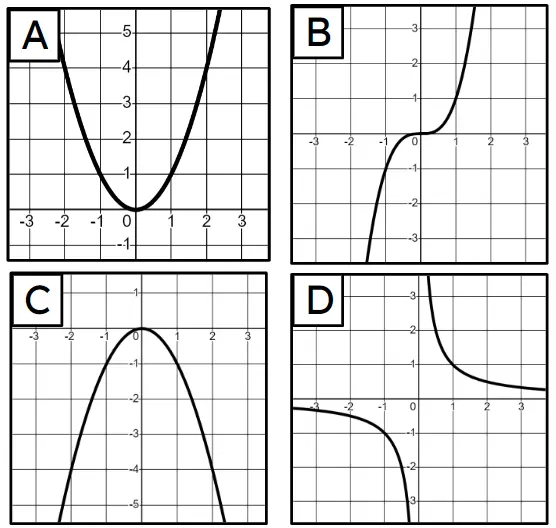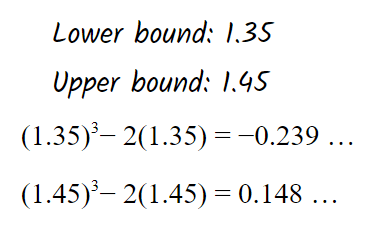Myths about teaching can hold you back


- Year 11•
- Higher


- Year 11•
- Higher
Signs of a solution
I can deduce why a change of sign may indicate a solution.
These resources will be removed by end of Summer Term 2025.
Switch to our new teaching resources now - designed by teachers and leading subject experts, and tested in classrooms.
These resources were created for remote use during the pandemic and are not designed for classroom teaching.
Lesson details
Key learning points
- If the value is a solution, then substituting it into the equation should mean the equation evaluates to 0
- Since the solution is an approximation, it is unlikely to be exactly 0
- By substituting the upper and lower bonds of the estimated value into the equation, you can tell if the estimate is good
- If the two values produce one positive and one negative value, this implies the graph would cross the x axis
- The x intercept would be a solution to the equation
Keywords
Iteration - Iteration is the repeated application of a function or process in which the output of each iteration is used as the input for the next iteration.
Lower bound - The lower bound for a rounded number is the smallest value that the number could have taken prior to being rounded.
Upper bound - The upper bound for a rounded number is the smallest value that would round up to the next rounded value.
Common misconception
A change in sign always indicates a solution. No change in sign means no solution.
A change in sign only indicates a solution if the equation is equal to zero and if the graph of the equation crosses the $$x$$ axis between those points. Where there is a repeated root or two solutions between them there may be no change in sign.
To help you plan your year 11 maths lesson on: Signs of a solution, download all teaching resources for free and adapt to suit your pupils' needs...
To help you plan your year 11 maths lesson on: Signs of a solution, download all teaching resources for free and adapt to suit your pupils' needs.
The starter quiz will activate and check your pupils' prior knowledge, with versions available both with and without answers in PDF format.
We use learning cycles to break down learning into key concepts or ideas linked to the learning outcome. Each learning cycle features explanations with checks for understanding and practice tasks with feedback. All of this is found in our slide decks, ready for you to download and edit. The practice tasks are also available as printable worksheets and some lessons have additional materials with extra material you might need for teaching the lesson.
The assessment exit quiz will test your pupils' understanding of the key learning points.
Our video is a tool for planning, showing how other teachers might teach the lesson, offering helpful tips, modelled explanations and inspiration for your own delivery in the classroom. Plus, you can set it as homework or revision for pupils and keep their learning on track by sharing an online pupil version of this lesson.
Explore more key stage 4 maths lessons from the Iteration unit, dive into the full secondary maths curriculum, or learn more about lesson planning.

Licence
Prior knowledge starter quiz
6 Questions
Q1.A value has been rounded to 2.8 to 2 significant figures. What is the lower bound of this value?
Q2.A value has been rounded to 2.8 to 2 significant figures. What is the upper bound of this value?
Q3.What is the value of $$x^3-2x+5$$ when $$x=2$$?
Q4.What is the value of $$x^3-2x+5$$ when $$x=-2$$?
Q5.Match the letter representing each graph to the equation of the graph.

A -
$$y=x^2$$
B -
$$y=x^3$$
C -
$$y=-x^2$$
D -
$$y=\frac{1}{x}$$
Q6.Using the iterative formula $$x_{n+1}=\sqrt[3]{4(x_n)^2-1}$$ and $$x_0=5$$ there is a solution to $$x^3-4x^2+1=0$$ correct to 2 significant figures when $$x=$$ .
Assessment exit quiz
6 Questions
Q1.Using the table of values shown for the equation $$y=x^3-4x+2$$ which of these statements are definitely true?

Q2.Between which sets of values is there definitely a solution to $$x^3-5x-1=0$$ ?
Q3.When might a change in sign not indicate there is a solution between two values?
Q4.The image shows Jacob's workings to test his approximate solution to the equation $$x^3-2x=0$$. What do you think his solution was?


